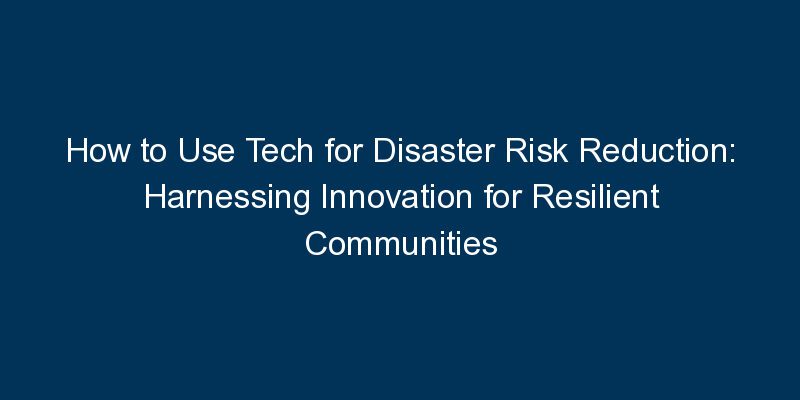Using technology for disaster risk reduction is a strategic approach to enhancing preparedness and resilience in the face of natural disasters. This blog provides a comprehensive guide on how to leverage technology for disaster risk reduction, offering innovative solutions to protect communities and mitigate the impact of disasters.
Introduction:
Natural disasters pose significant threats to communities worldwide, and technology can play a pivotal role in minimizing risks and enhancing response capabilities. This guide explores the key steps in using technology for disaster risk reduction, contributing to the creation of more resilient and adaptive societies.
Key Steps to Use Tech for Disaster Risk Reduction:
- Implement Early Warning Systems: Deploy advanced early warning systems that leverage sensors, satellite data, and machine learning algorithms to predict and alert communities about impending disasters such as hurricanes, floods, or earthquakes.
- Remote Sensing and GIS Mapping: Utilize remote sensing technologies and Geographic Information System (GIS) mapping to assess and monitor vulnerable areas. This allows for accurate risk mapping and helps in planning and resource allocation for disaster-prone regions.
- Develop Mobile Apps for Emergency Communication: Create mobile applications that enable seamless communication during emergencies. These apps can provide real-time updates, evacuation routes, and emergency contacts, enhancing community awareness and coordination.
- Implement Drone Technology for Disaster Assessment: Leverage drone technology for rapid disaster assessment. Drones equipped with cameras and sensors can survey affected areas, assess damage, and provide crucial data for emergency response and recovery efforts.
- Utilize AI for Predictive Modeling: Apply artificial intelligence (AI) for predictive modeling of disaster scenarios. Machine learning algorithms can analyze historical data, weather patterns, and environmental factors to predict the likelihood and impact of future disasters.
- Establish Community Resilience Platforms: Develop online platforms that facilitate community engagement and resilience-building initiatives. These platforms can provide educational resources, training modules, and community forums to share knowledge and experiences.
Conclusion:
Using technology for disaster risk reduction is essential for creating resilient communities capable of mitigating the impact of natural disasters. By following the steps outlined in this guide, organizations and communities can harness the power of innovation to enhance preparedness, response, and recovery in the face of adversity.






















Comments